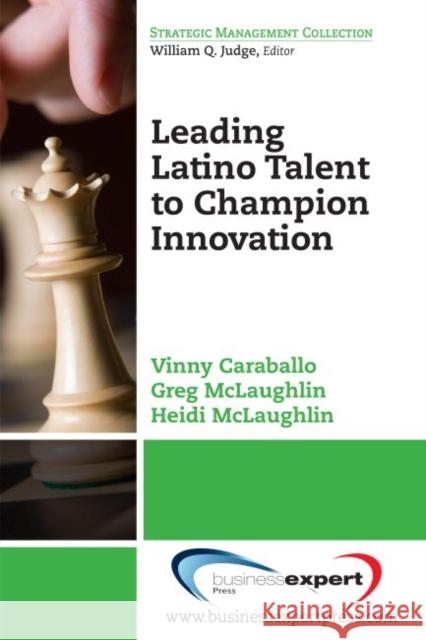Leading Latino Talent to Champion Innovation » książka
Leading Latino Talent to Champion Innovation
ISBN-13: 9781606498002 / Angielski / Miękka / 2014 / 134 str.
This book is a study on how to unlock the innovative potential of the US Latino workforce. It goes beyond diversity by looking into how this emerging segment of the workforce views, accepts, and embraces innovation.
This book really lends itself to understanding that innovation emanates from human beings, and cultural influences will determine how innovation is defined. Latinos will make up 31 percent of the US workforce by the year 2050, and a significant part of the country's knowledge workers will come from this demographic.
One of the most influential factors of the 21st century is the Latino community--how the culture views, defines, and helps lead innovation in the United States. But achieving sustainable innovation success is a concept many corporations struggle to attain, often the result of too much effort directed at processes rather than focusing on the source of innovation--its human capital. This book helps you realize that innovation emanates from human beings and people view innovation differently based on their cultural upbringing. Since the 1980s the United States Latino population has been on a steady growth path that has established this group as the largest 'minority' in the country, making this community a significant portion of the U.S. workforce for decades to come. The authors help you learn how to prepare, recruit, and position knowledge workers with this cultural background to contribute innovation successes to their firms.
One of the most influential factors of the 21st century isthe Latino community-how the culture views, defines,and helps lead innovation in the United States. But achievingsustainable innovation success is a concept many corporationsstruggle to attain, often the result of too mucheffort directed at processes rather than focusing on thesource of innovation-its human capital.This book helps you realize that innovation emanatesfrom human beings and people view innovation differentlybased on their cultural upbringing. Since the 1980sthe United States Latino population has been on a steadygrowth path that has established this group as the largest"minority" in the country, making this community a significantportion of the U.S. workforce for decades to come.The authors help you learn how to prepare, recruit, andposition knowledge workers with this cultural backgroundto contribute innovation successes to their firms.











